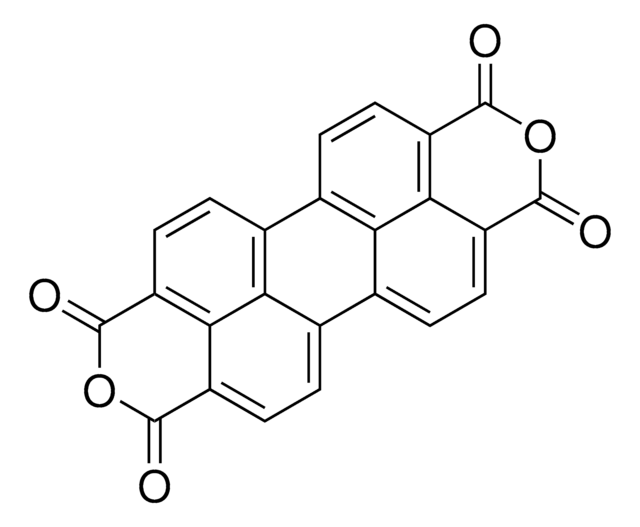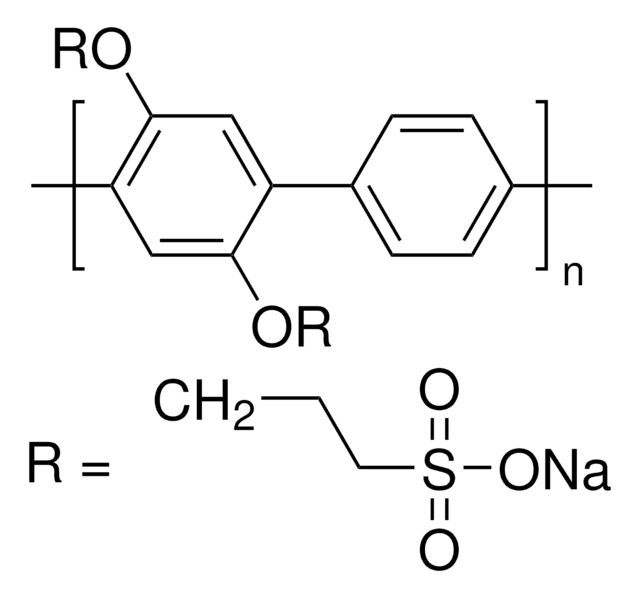Wichtige Dokumente
546461
Poly-[5-(3′,7′-dimethyloctyloxy)-2-methoxy-1,4-phenylenvinylen]
light-emitting polymer
Synonym(e):
MDMO-PPV
About This Item
Empfohlene Produkte
Beschreibung
Band gap: 2.2 eV
Mol-Gew.
Mn ~120,000
Löslichkeit
toluene, xylene, THF, chloroform, chlorobenzene, cyclohexanone: soluble
Fluoreszenz
λex 485 nm; λem 555 nm in toluene
Energie der Orbitale
HOMO -5.4 eV
LUMO -3.2 eV
Leistung von OPV-Bauelementen
ITO/PEDOT:PSS/MDMO-PPV/PC61BM/Al
ITO/PEDOT:PSS/MDMO-PPV:PC61BM (1:4)/LiF/Al
SMILES String
COc1ccc(OCCC(C)CCCC(C)C)cc1C=C
Allgemeine Beschreibung
Anwendung
Lagerklassenschlüssel
11 - Combustible Solids
WGK
WGK 3
Flammpunkt (°F)
Not applicable
Flammpunkt (°C)
Not applicable
Persönliche Schutzausrüstung
Eyeshields, Gloves, type N95 (US)
Hier finden Sie alle aktuellen Versionen:
Besitzen Sie dieses Produkt bereits?
In der Dokumentenbibliothek finden Sie die Dokumentation zu den Produkten, die Sie kürzlich erworben haben.
Kunden haben sich ebenfalls angesehen
Artikel
In the emerging field of organic printable electronics, such as OLEDs and organic photovoltaics (OPVs), there is a significant need for improved organic conducting and semiconducting materials. This paper reports our recent progress in two fields: 1) the development of solvent-based dispersions of the intrinsically conducting polymer (ICP) poly(3,4- ethylenedioxythiophene) (PEDOT) and 2) the synthesis of new electron-deficient (n-type) semiconducting polymers.
The union of distinct scientific disciplines is revealing the leading edge of Nanotechnology.
PCBM-based n-type semiconductors - Find p- and n-type organic semiconductors available from Sigma-Aldrich with PCBM library & properties.
The development of high-performance conjugated organic molecules and polymers has received widespread attention in industrial and academic research.
Unser Team von Wissenschaftlern verfügt über Erfahrung in allen Forschungsbereichen einschließlich Life Science, Materialwissenschaften, chemischer Synthese, Chromatographie, Analytik und vielen mehr..
Setzen Sie sich mit dem technischen Dienst in Verbindung.
